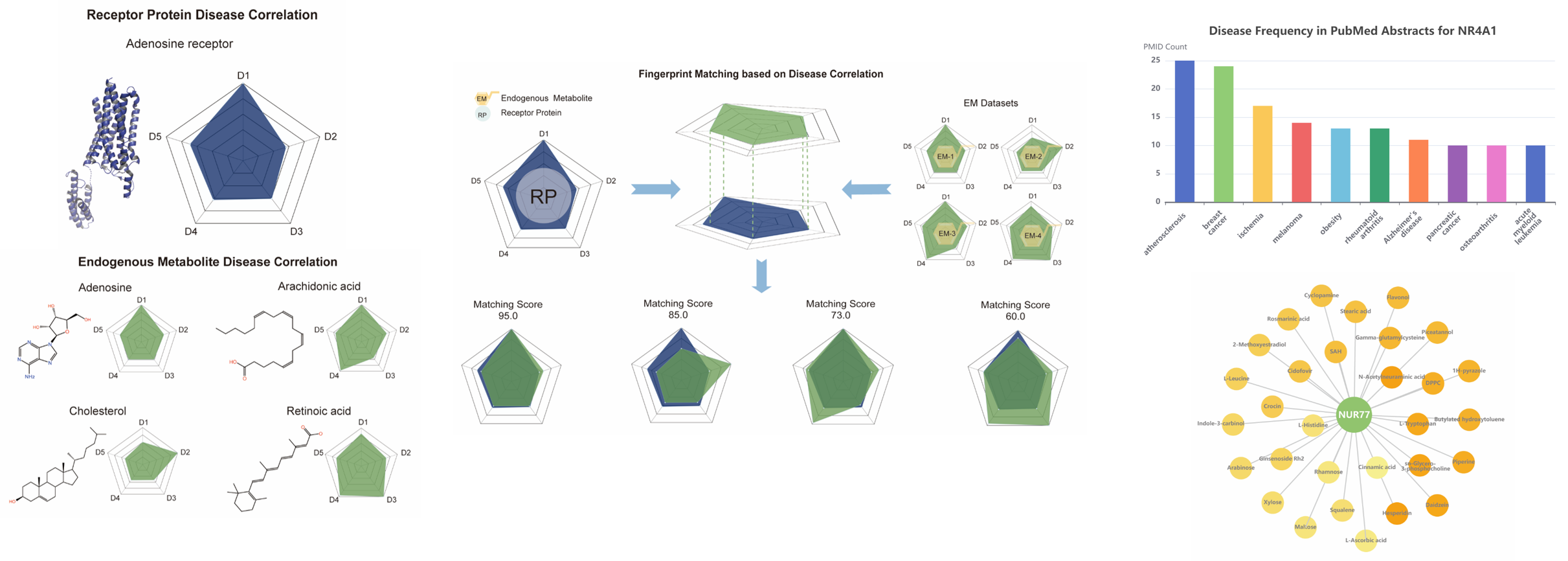Introduction
To discover the most possible endogenous modulators of receptor proteins from thousands of endogenous metabolites, we proposed an assumption. If a receptor protein is highly correlated with several specific types of disease, then its endogenous modulators should also be highly correlated with these diseases. Therefore, we intend to use disease correlation in literature as a bridge, for the discovery of endogenous modulators targeting designated receptor protein. For each receptor protein, its top-ranking highly correlated disease types were identified via calculating the frequency of these disease types in PubMed abstracts. Meanwhile, the top-ranking highly correlated disease types for more than one thousand small-molecular human endogenous metabolites were determined following the same process. Then disease correlation coefficients were calculated for both receptor proteins and endogenous metabolites, based on these disease frequencies reported in the literature. Using the principle of fingerprint matching, endogenous metabolites with minimal difference in disease correlation pattern—indicating a high degree of matching—can be identified as potential endogenous ligands or modulators for designated receptor protein.
Citation
Disease correlation mapping-based identification of 2-methoxyestradiol as an endogenous modulator of the orphan nuclear receptor Nur77
PMID: XXXXX

